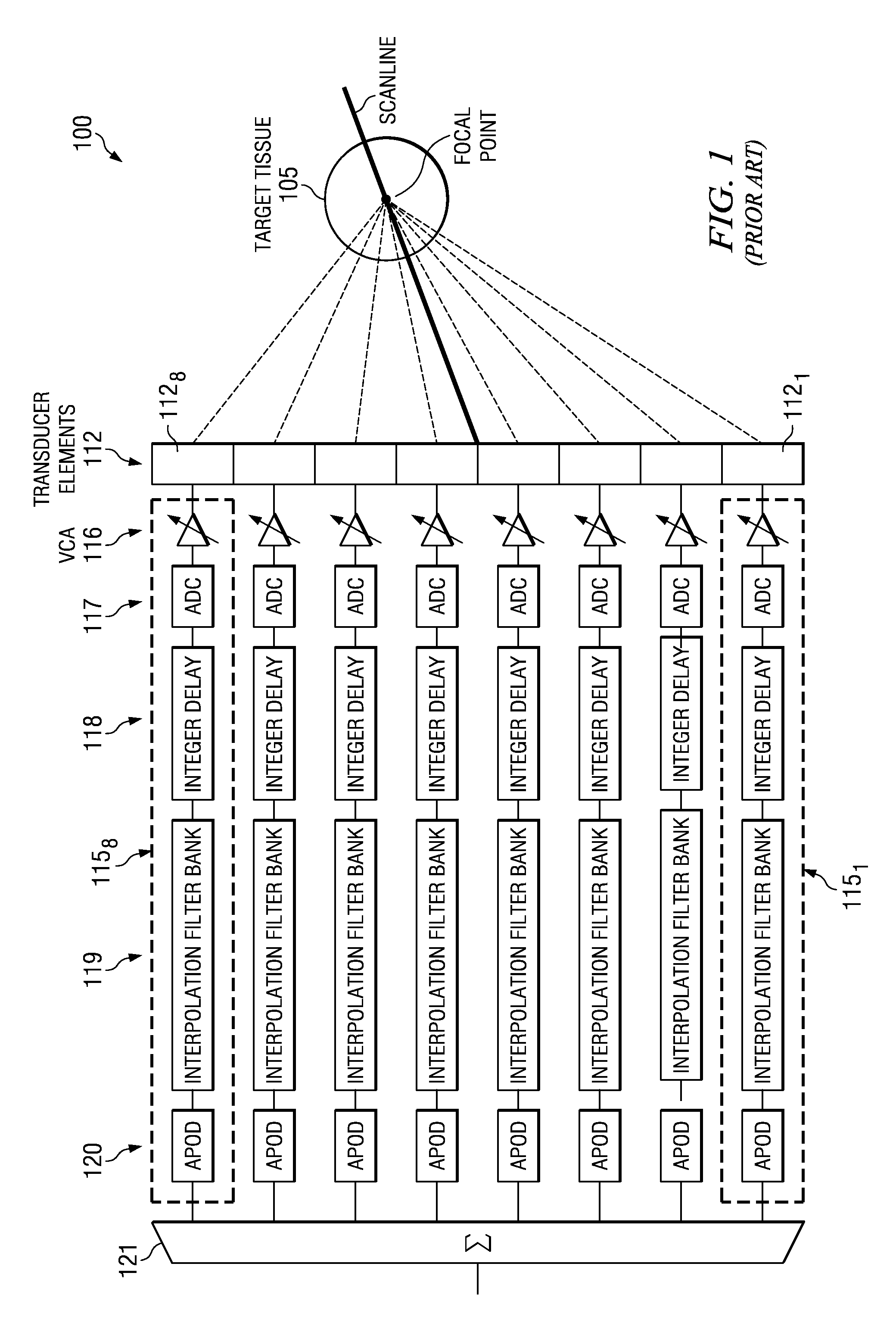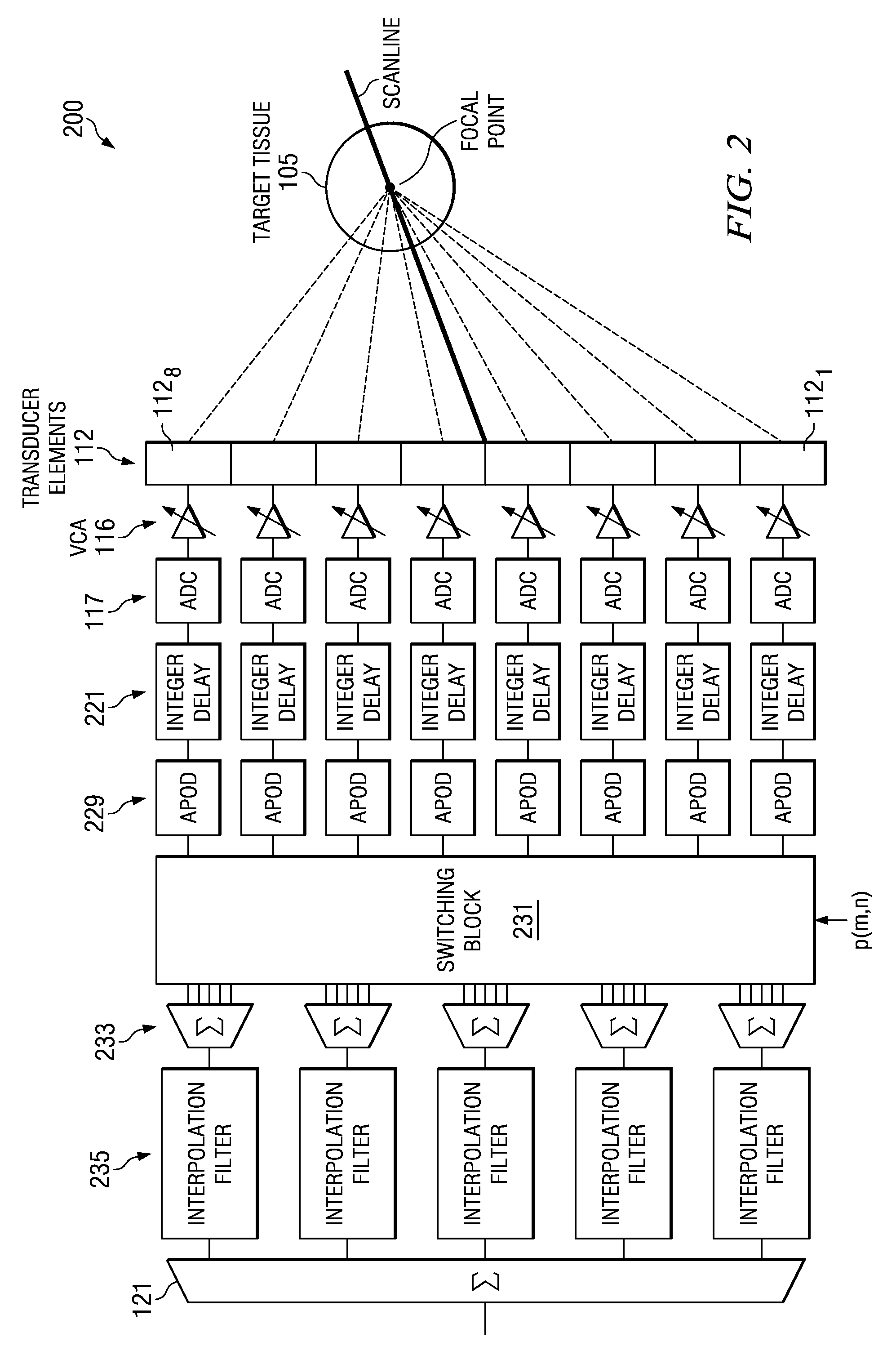Receive beamformer for ultrasound
a beamformer and ultrasound technology, applied in tomography, applications, instruments, etc., can solve the problems of significantly limiting the number of data channels and thus the spatial resolution provided, power dissipation, cooling requirements, etc., to save gate count, reduce power consumption, and reduce computational intensity.
- Summary
- Abstract
- Description
- Claims
- Application Information
AI Technical Summary
Benefits of technology
Problems solved by technology
Method used
Image
Examples
examples
[0059]Embodiments of the invention are further illustrated by the following specific examples, which should not be construed as limiting the scope or content of embodiments of the invention in any way.
[0060]FIG. 7 shows a comparison of the number of multipliers numMults required for a conventional (shown as the “baseline implementation”) ultrasound receive data architecture implementation and an ultrasound receive data architecture implementation according to an embodiment of the invention (shown as the “new implementation”) for a selected variety of parameters, including sampling rate (MHz), delay accuracy, number of transducer elements / channels, filter order and MLAs. As the number of MLAs increases, the relative performance / efficiency of algorithms according to an embodiment of the invention improves. For a given number of transducer elements (M), the performance of algorithms according to an embodiment of the invention decreases as the number of interpolation filters (P) increas...
PUM
 Login to View More
Login to View More Abstract
Description
Claims
Application Information
 Login to View More
Login to View More - R&D
- Intellectual Property
- Life Sciences
- Materials
- Tech Scout
- Unparalleled Data Quality
- Higher Quality Content
- 60% Fewer Hallucinations
Browse by: Latest US Patents, China's latest patents, Technical Efficacy Thesaurus, Application Domain, Technology Topic, Popular Technical Reports.
© 2025 PatSnap. All rights reserved.Legal|Privacy policy|Modern Slavery Act Transparency Statement|Sitemap|About US| Contact US: help@patsnap.com



